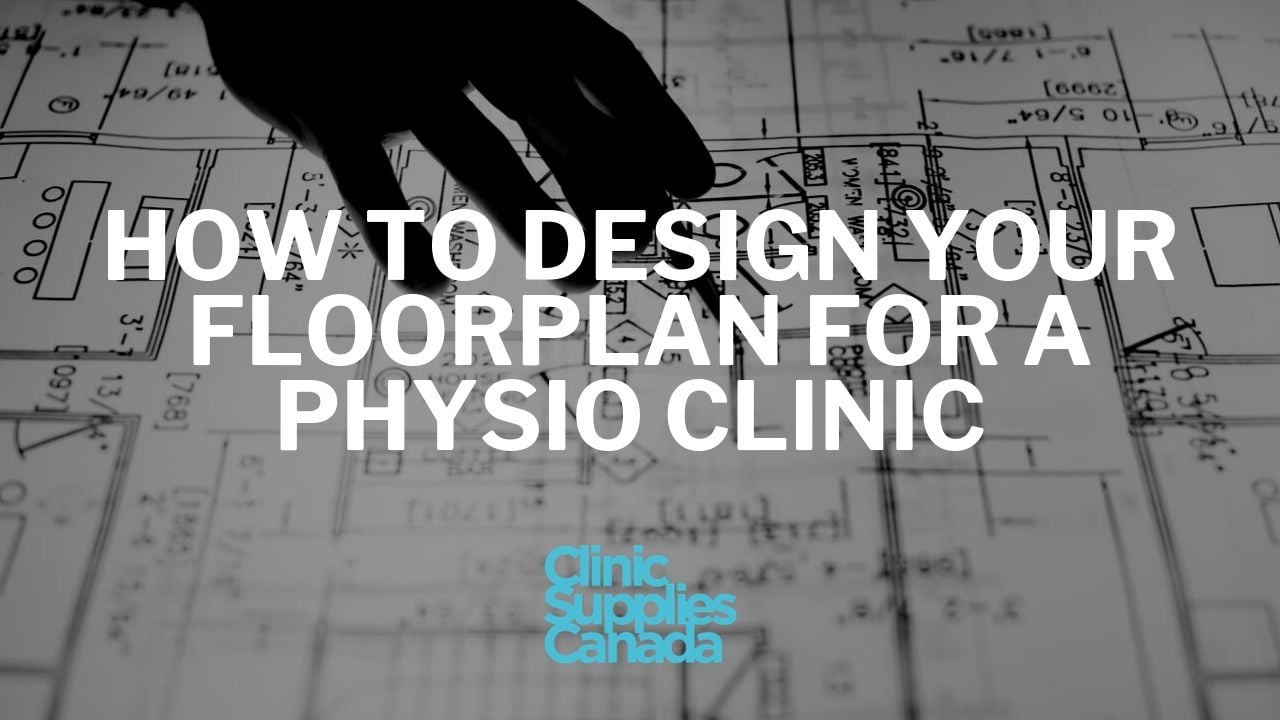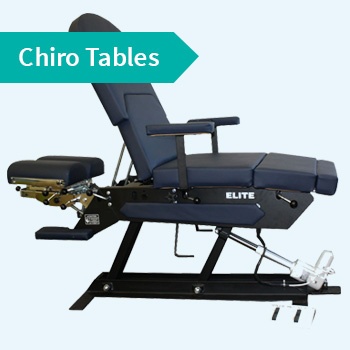
See Why Your Floor Plan Is One of Your Greatest Revenue-Drivers
Regardless of the size and configuration of your clinic space, the floor plan design must include considering the quality of both staff and patient experience, your marketing plan, and your business growth plans and capacity.
Did you know, for example, that your physiotherapy clinic’s floor plan can contribute to clinician ‘burn out’? I’ve seen clinic owners lose star clinicians for many reasons, but one big reason is that they get fed up with the way the space is designed, and want to work in a more pleasant environment.
That’s just one of many reasons to give serious attention to your clinic’s floor plan.
Once you’ve built out your floor plan, it will cost both time and money to change it again. So whether you’re just starting out with your first clinic, looking to expand locations, or relocate, make the smart move, and invest time on creating the plans for this critical revenue-driving element,.
What Is the Ideal Size for a Clinic Floor Plan?
Many physiotherapy clinics operate in spaces with less than 1500 square feet. While there are ways to maximize that space to increase revenue, which I will discuss in a moment, the reality is that a space that small will limit your growth. You can only see so many patients at once.
Over my career I have grown and sold over 127 clinics - and been a coach to many other clinic owners - and I have found that the ideal clinic size is 2200 – 2500 square feet. That amount of space gives you room to expand without having to move, and allows you to implement many of the 12 floor plan tips I’m going to share next.
A clinic in a space that size can very realistically generate $1.5 to $3 million in revenue annually.
So, let’s get to the 12 physiotherapy floor plan tips, which you can put to use immediately if you’re in the process of designing a new clinic space, whether for a remodel, a relocation, or an expansion.
12 Floor Plan Tips for Physiotherapy Clinics
These floor plan tips are specifically geared towards physiotherapy clinics, because they usually include a gym. Many of these tips will most certainly apply to chiropractors, and massage clinics, but the reality is that physiotherapy clinics probably need more space than you do, all things being equal.
For multidisciplinary clinics, this is a terrific tool to start off your planning.
1. Generous Reception Area
A larger reception area gives you more flexibility to create a better waiting experience. Take a minute and imagine the reception area in a luxury spa.
There may be a separate a section for retail and products, and there is space for showcasing art, aquariums, and other visual interests that create the atmosphere you want patents to experience.
Most importantly, you need to ensure there is room for people to be able to sit comfortably, with enough chairs for them to sit in.
2. Separate Waiting Area
While only a larger space can accommodate this physically, separating your reception area from your waiting area accomplishes a number of goals that improve both staff and patient experiences.
Primarily, a separate waiting room gives patients more privacy. When a new patient arrives and registers, a separate waiting area provides more privacy than a common area in which all the other patients may be able to hear their personal information. It also limits the amount of information people may hear conveyed over the phone.
In addition, from a staff perspective, a separate waiting area may reduce the distance your clinicians have to walk to meet patients.
Finally, if your clinic does grow too big for your floor plan, the waiting room offers space for expansion, which is usually preferable to relocating.
3. Design Your Layout Around Shifts
From a revenue perspective, the more patients you see, the more money you’ll make. Offering two shifts per day will not only increase revenue but also serves patients better, many of whom have to miss work if your clinic hours are between, say, 9am and 4pm. Expanding clinic hours so you open at 7am and close at 8pm will give new and current patients more scheduling options. While this will require recruiting more clinicians, you will also be able to increase the number of patients being treated.
Breaking your clinic hours into two shifts also gives staff more flexibility on hours: they can choose to work the morning shift or the afternoon/evening shift, which may accommodate their personal or family situation.
In fact, the best strategy for smaller clinics - those under 1500 square feet - to increase revenue and maximize space is to be open longer.
4. Opt for Rectangles Over Squares Layouts
I’ve seen a lot of clinic floor plans. If you’re in the market for a new location, look for the ideal layout, and in my experience, rectangles beat squares every single time.
Squares are more difficult spaces to divide up and to optimize the number of beds and rooms effectively.
Rectangles allow a more efficient allocation of space for rooms, shared spaces with multiple beds, a gym, hallways, and the other rooms you’ll need. Plus, rectangles can more easily utilize an ‘Ikea’ style layout, which I’ll discuss a bit later.
5. Put Your Staff Room Closer to the Front
Many clinic layouts push the staff room – if you have one – back in the corner or off to the side, as far away from patient traffic as possible.
But there are good reasons to consider putting your staff room adjacent to your reception, or as close to it as you can get. For example, if a patient is having trouble working out a treatment schedule, staff at the front desk will need the clinician to review the patient’s treatment plan options. A closer staff room makes the resolution easier and faster, serving patients better and stressing out your front desk team a little less.
These are some of the little things that, when you experience them day after day, year after year, can make a huge difference in reducing burnout and fatigue in your staff.
6. Create an Ikea-Style Journey
Ikea’s in-store layout creates a forced pathway. Shoppers cannot simply ask to see the rug section or the lamp section. They have to walk through the whole store and see many other products that are also for sale. Ikea forces its customers to experience their entire store.
Your physiotherapy clinic, especially if it’s a multi-disciplinary one, can do the same thing.
For example, if you also offer massage therapy and chiropractic, you can situate their areas on the pathway to the physiotherapy treatment areas. Patients will note that you also offer those services, which will increase the likelihood of them booking with your clinic when they need those treatments, and vice versa.
7. Use Galley-Style Open Rooms
People have a variety of views on this point, but I believe the case for open rooms is stronger than the one for exclusively private rooms. If you have the space, you may want to have both. But a galley-style approach offers a number of benefits:
- It uses space more efficiently – you can treat more patients, which is another way to maximize the use of a smaller space
- It allows ongoing mentorship between clinicians, as they hear conversations and scripts being used by colleagues
- It fosters stronger sense of community among patients, the ‘we’re all in this together’ sort of feeling that helps patients feel less alone, and to see each other’s progress.
In an open room, you can also choose to have curtains or no curtains, which again affects the level of community-building and patient friendships that can develop.
However it may be wise to have a few private treatment rooms, as some patients require privacy, depending on their treatment and history.
8. Include a Central Prep and Charting Area
To reduce duplicating the same function in multiple rooms, creating a central prep area is a great idea. Depending on your layout, this may not even need its own room. It could just be an island in the center of your galley or bordering the gym.
The ideal approach is to center the prep area so it is more or less the same distance from most of the treatment beds. This will reduce foot traffic and speeds up your patient service. It’s also flexible, because you can move the island if need be.
9. Modality Cart Storage
A modality cart can be set up in the same manner as the central prep area, where the most used supplies and equipment are stored. You might also choose to make it mobile, using a cart instead of a fixed island.
The flexibility you gain using strategies like this makes it easier to adapt and grow as your practice expands and the needs of patients change. And it helps your staff because it keeps things close by, reducing the need to have duplicate on-site permanent storage, another challenge for clinics in a smaller space.
10. Use Light and Music
Lighting can make an environment pleasant, or abrasive. Look for lighting options that provide both service and functionality, allowing your staff and patients to see the work area clearly.
Good lighting is especially important in the waiting room and reception area. While patients wait, they need to be able to read magazines or their electronic devices easily. But be careful not to have noisy fluorescent lights that suck all the color out of the room.
As for music, while preferences vary, it’s usually best to have some music as opposed to no music. You might want to select higher energy music that generates a more positive atmosphere in your treatment area – another reason to use a galley layout. This kind of music can help patients stay more motivated and engaged in their treatment.
11. Include Branding, Culture, and Words in Your Layout Design
Artwork on the walls has its place. But what else you can do with wall and floor surfaces? Consider putting logos, value statements, motivational quotes, and other encouraging phrases throughout the clinic - on walls, rugs, front desk, and in treatment rooms.
You have ample creative freedom here. Visual and written expressions like these are far more enjoyable and have a greater impact on patients than plastic containers filled with brochures, charts, and diagrams of the human body, not to mention blank empty walls and floors.
You can even include marketing here, such as a special deal you offer to new patients, or a referral rewards program. Don’t hesitate to use every opportunity at your disposal to motivate and activate your patients in ways that benefit them as well as your clinic.
12. Use Social Proof
Credentials, awards, and even patients’ personally written testimonials (with photos is even better) make much more engaging and motivating decorations than random artwork. And again, it serves the dual purpose of encouraging patients, and building trust with you as a business, increasing your retention and referral rates.
Free Webinar: How to Start and Design The Perfect Clinic
I have been mentoring hundreds of clinic owners through my clinic accelerator community. My goal is to teach them how to maximize revenue by promoting stability among staff and optimizing patient experience, and best of all, not overwork themselves and spend more time with family.
By implementing as many of the above strategies as possible in your clinic’s floor plan, you will be serving both patients and staff in large and small ways that improve their experience.
Your clinic should be a pleasant and enjoyable place for patients. It should also be a pleasant place to work. By arranging your rooms to simplify access to your supplies, make it easier for people to navigate and increase patient community, you will strengthen the underlying patient and staff experiences.
You can learn more about designing the perfect clinic floor plan in a free webinar I am offering.
In this webinar, you’ll see my three favourite floor plans, including the most profitable ways to maximize your space utilization and the patient experience. You’ll see an 1800 sq ft layout that brings in $1.5 million in annual sales, a 3000 sq ft one doing $3.3 million, and much more.
It’s free for the taking, pre-recorded, and immediately applicable to anyone starting, expanding, or relocating their physiotherapy clinic.
ABOUT RICK LAU

Has built three 10 million dollar healthcare businesses over the past 15 years including a network of 127 clinics with over 1400 employees. He is one of the most sought-after mentors for clinic owners in Canada and USA where he helps owners double, triple, and even quadruple their profits by optimizing their clinic operations using his proven systems and leadership strategies.








